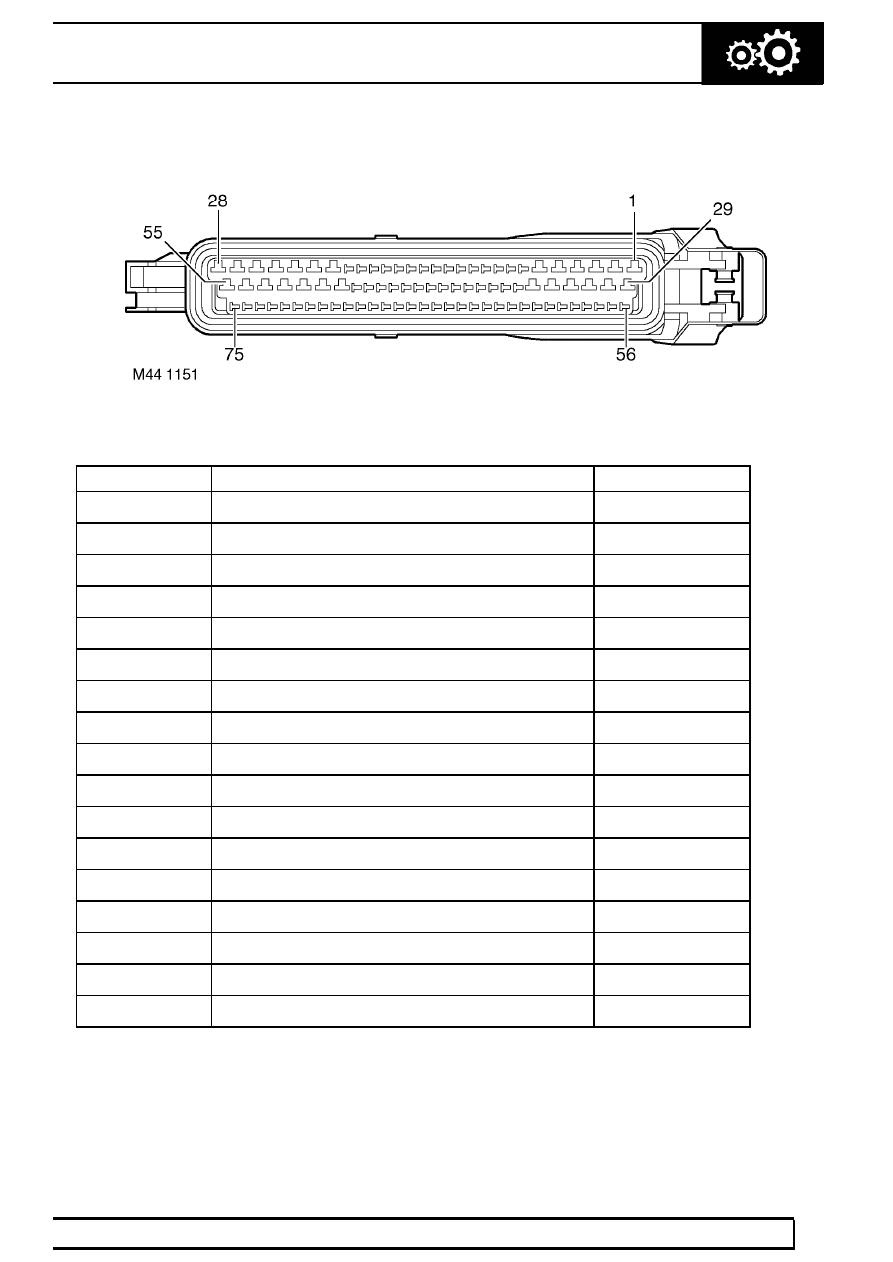Range Rover. Manual - part 154

ZF AUTO
17
DESCRIPTION AND OPERATION
EAT ECU connector - Petrol vehicles from 99MY
EAT ECU connector pin details - Petrol vehicles from 99MY
Pin No.
Description
Input/Output
1 to 4
Not used
-
5
Pressure regulator solenoid valve (MV 4)
Output
6
Power earth
-
7
Not used
-
8
Gear position switch, Y contacts
Input
9 to 12
Not used
-
13
Transmission high/low switch
Input
14
Gearbox output shaft speed sensor, negative
Input
15
Gearbox output shaft speed sensor, cable screen
-
16
CAN high
Input/Output
17 to 24
Not used
-
25
MES 1 - message centre display
Output
26
Battery supply
Input
27
Not used
-
28
Electronics earth
-
29
Not used
-
30
Shift control solenoid valve (MV 1)
Output